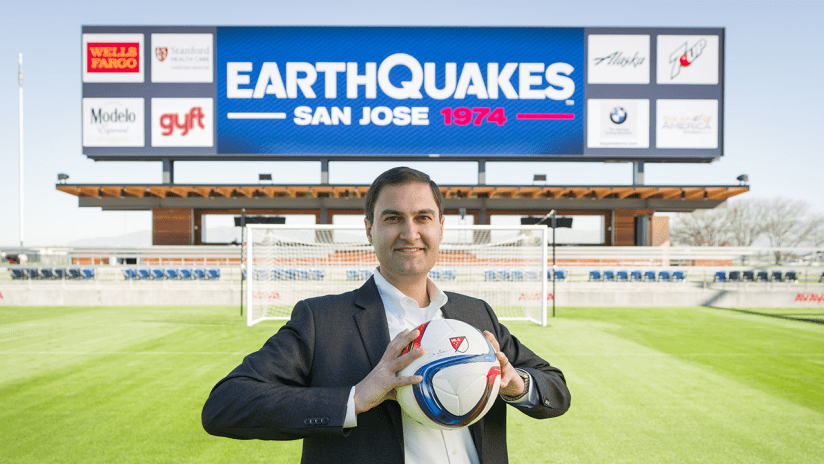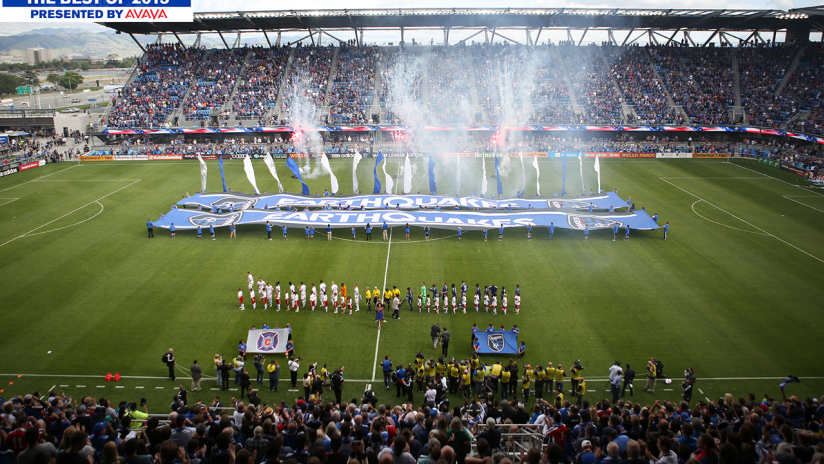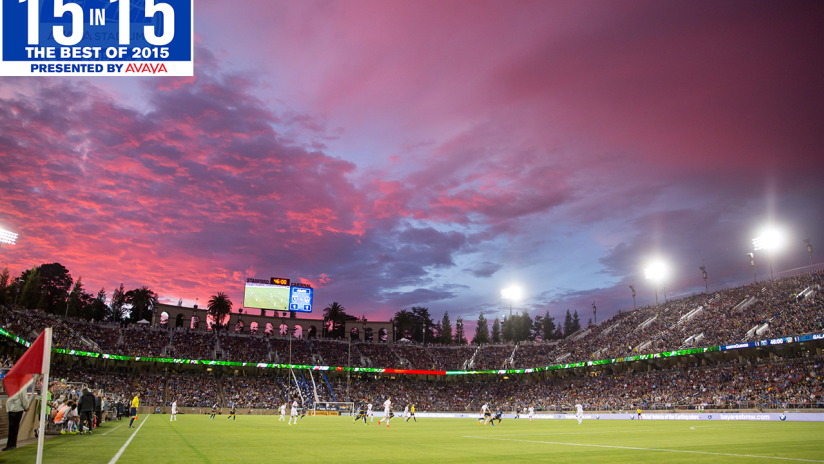SAN FRANCISCO, Calif. - Major League Soccer is about to complete its second decade. Recently, I sat down with David Kaval, president of the Earthquakes, for his outlook.
“I don’t think that there is any reason to think that we couldn’t be the No. 1 professional club league in 20 years,” Kaval said as the Quakes warmed up on the field of Avaya Stadium before their match against Seattle on Saturday.
“We have so many of the resources here, whether it’s the core source of talented players, the business acumen, the facilities, and most importantly now, we have the interest.
“We are a soccer country. In 20 years, I could see the U.S. men’s national team at a level where it could win the World Cup, where our club teams attract the best players in the world. MLS will be pushing the big leagues in Europe for the best talent, and you will have multiple generations of American soccer fans connected to the sport in a deep way.”
This, of course, will be a steep climb. The nation’s bigger sports own serious muscle in the marketplace and our sporting consciousness. This week, Forbes ranked the Dallas Cowboys as the richest sports franchise in the world, topping $4 billion in value.
MLS teams pale in comparison, with an average worth of $157 million, according to Forbes. Worth noting, though: That represents a 50 percent increase during the past two years, quite a return. But the traditional sports continue to fuel their dominance with TV ratings that pull in money like a black hole swallowing light. The MLS TV contract is worth $90 million.”
Fill the NFL sack with $3.1 billion from broadcasters’ purchasing rights.
Besides TV ratings, growing U.S. soccer to compete globally is reliant on the sport weaving itself into the national psyche. Forbes reports average attendance at MLS matches at 21,000, up 20 percent since 2013. NHL games draw an average of 17,500, by comparison. Pushing forward that grassroots momentum requires a soccer spectacle. Call it fame and fortune.
“I think we need one or two great American players,” said Kaval, who oversees the business and technical sides of the Earthquakes franchise and spearheaded the development and construction of Avaya Stadium. “We need the American (Lionel) Messi. A player of world caliber. Someone to break the impression that Americans just produce great goalies. That’s why the investments in soccer academies are important, developing players at a younger age, attracting athletes that are playing basketball, baseball and football, to get the best athletes to play soccer.”
Should such genius appear anytime soon, Europe will be his destination. MLS can’t pay $41 million a year to a player. That’s what Barcelona’s Messi takes home in wages.
So, is America a soccer nation? In other countries, soccer dominates. Memory of playing legends prevail, team rivalries run deep, folks are buried in their team colors, football unites communities.
Kaval imagines the process happening here.
“You know, the way that my dad took me to MLB games,” said Kaval, whose passion for baseball led him to co-found the Golden Baseball League in 2003 before he became president of the Quakes in 2010. “People need to understand that back at the last big immigration influx into the United States, at the turn of the last century, many people came from Europe. A lot of those new immigrants, new Americans, really got behind baseball. And that created that sport in a way.
“It became the sport of the Italian Americans, the Polish Americans. We have an opportunity now in soccer, in this next generation to be the sport of the new America. So many different people, from so many different parts of the world, who are already connected culturally to the sport. They just need a league to root for.”





